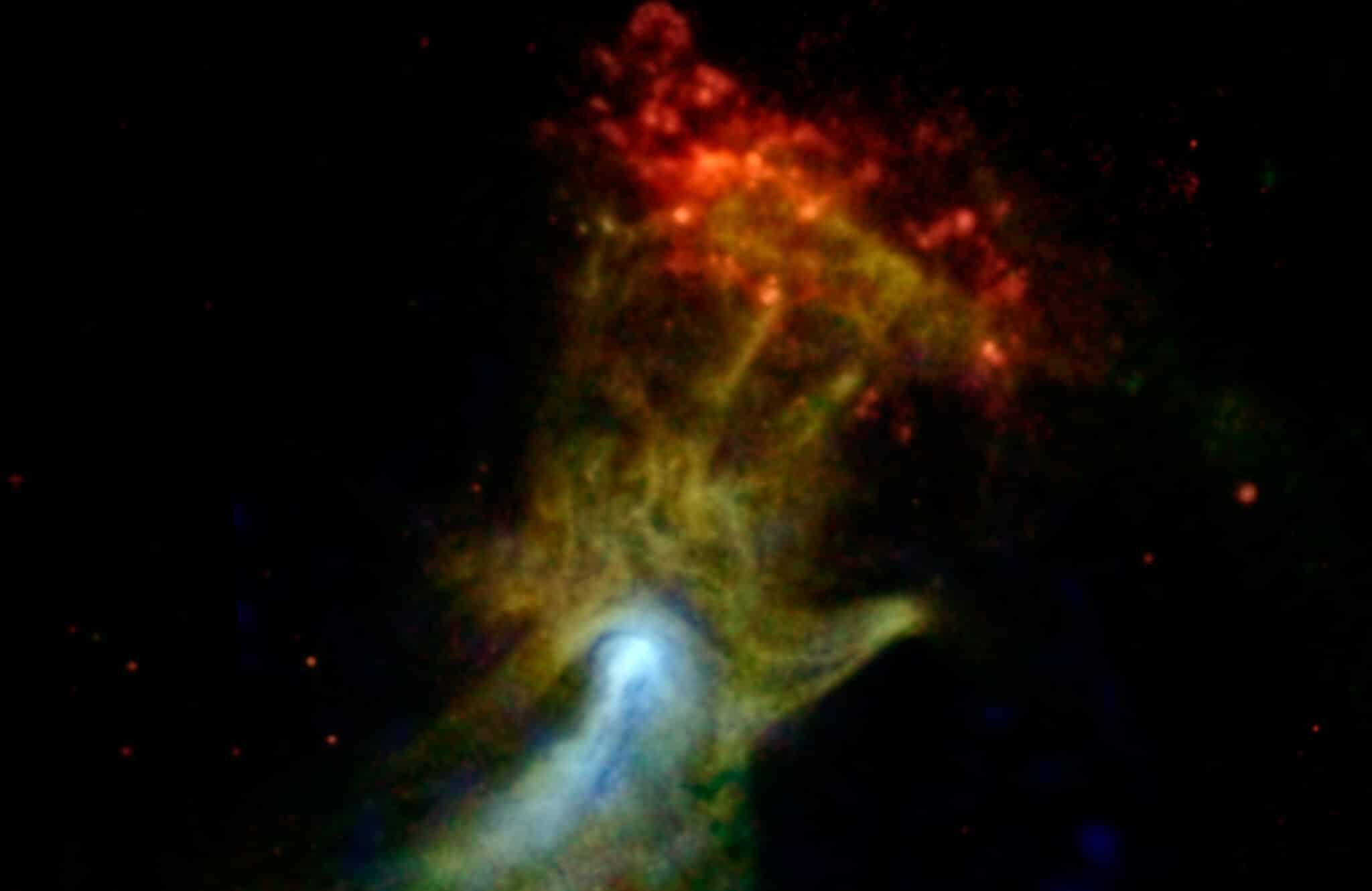

The space photo of the week is this beautiful photo of pulsar PSR B1509-58. In 2014, NASA’s NuSTAR telescope photographed this pulsar and a mysterious hand appeared.
PSR B1509-58 is 17,000 light-years from Earth. The 150 light-year-wide nebula is illuminated by a pulsar, a dead star. After the supernova explosion, part of the core remains. This pulsar is only 19 kilometers in diameter, but it rotates on its axis no less than seven times every second. This causes the star to emit particles, which again come into contact with the gas of the supernova remnant. This material gives off X-rays, which can be seen on this X-ray as an open hand.
The pulsar itself is not visible in this special photo. The dead star is just above the bright white spot below the hand.

Unresolved Questions
There are still some unresolved questions about PSR B1509-58. The main question is: does interaction between particles from the pulsar and the supernova particles give the appearance of the hand or does the material take the shape of a hand? “We don’t know whether the hand is an optical illusion or not,” said McGill University scientist Hongjun An. “In this NuSTAR photo, the hand looks more like a fist, which gives us some ideas.”
Successful year for NuSTAR
This photo of a cosmic “Hand of God” is probably the most famous photo from the NuSTAR mission. The Nuclear Spectroscopic Telescope Array (NuSTAR) is currently still active and has been in the news regularly this year. Most recently, NuSTAR was used to detect light from the back of a black hole for the first time. And earlier this year, astronomers found the remains of a star that exploded in 1987.